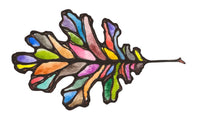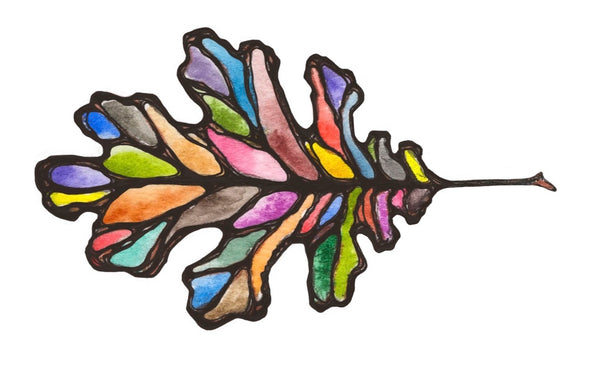
Student Grade vs. Artist Grade/Professional Grade Watercolor Paint
Some of our most frequently asked questions: What is the difference between student and artist grade paint? Which is the best choice for beginners and why the price difference?
I'm going to dive into answers for each of these questions in this article so that you can decide which is best for YOU.
Please note: in this article, I am discussing the differences between quality student grade paints by respected manufacturers and professional grade paints. When I mention student grade paints I am not including crafting paints, kids paints, or other budget brands in my descriptions.

My first set of watercolor paints. This set rides the line between lower grade student paints and kids paints. They were recommended by my first watercolor teacher and served the purpose well for my first lessons. However, looking back, there is more I could have learned if I had upgraded my colors after my first year of lessons.
Student Grade vs. Artist Grade or Professional Grade Watercolor Paint
There are many degrees of quality within both of these categories, so the following table is just about generalizing the differences:
| Student Grade | Artist Grade |
| Less Expensive | More Expensive |
| Lower Concentration of Pigment | Higher Concentration of Pigment |
| More Fillers | Less or No Fillers |
| Lower Quality Pigments | Higher Quality Pigments |
| Lower Quality Ingredients | Higher Quality Ingredients |
| More "Hues" & Pigment Mixtures | More Single-Pigment Paints |
| Less Predictable Mixing Results | More Predictable Mixing Results |
| Less distinct pigment characteristics | More distinct pigment characteristics |
 |
 |
Above left swatch: Winsor & Newton Cotman Ultramarine blue, Above right swatch: Greenleaf & Blueberry Ultramarine Blue. Both were painted with the same application process. The point of this comparison is not to throw W&N under the bus or contrast "bad vs good" - I am purely trying to demonstrate the difference between student and artist grade paints (both of which are useful!) and objectively analyze their general differences.
Some student grade colors are very high quality indeed, while others are little better than children's paints. Likewise, some colors labeled as "Artist's" would be more accurately categorized as student colors.
For those of you wondering how to categorize "handmade watercolors", that is a whole separate topic in and of itself, but there is a similar spectrum of quality within that category.
Always remember to be a discerning consumer, that in general you get what you pay for, and that labels are only skin deep - the proof is in the pudding.
Why the price difference?
 |

|
| $294.70 | $21.12 |
Top quality Lapis Lazuli from Afghanistan is very expensive. Processing and purifying Lapis into an artist's pigment is time consuming and therefore expensive. Different grades, concentrations, and processing styles yield very different results. Both of the above brands are considered Artist Grade.
The most expensive component of paints is pigment and labor. In general, the higher the pigment load, the higher the price. This also applies to the quality of the pigment and the quality of the rest of the ingredients. Paint made in smaller batches or with more attention will cost more in labor, but will also generally yield a higher quality product.
For example, there are different grades of gum arabic and some pigments are far more expensive than others. To keep costs down, an inferior gum arabic may be used in the binder, and either a mixture of pigments to approximate the hue of a more expensive pigment may be used, or fillers may be used to bulk out the paint volume without using more pigment.
Pigments with a higher tinting strength can mask fillers well, but the paints won't last quite as long as those that do not have fillers.
Is Student Grade or Artist Grade best for beginners?

This is our palette that I usually recommend to the enthusiastic beginner who has decided to learn with artist grade colors. It contains colors for practicing color mixing - both synthetics and Ochres, secondary colors so that every color doesn't need to be mixed from scratch, and only ten colors in total to avoid overwhelm.
There is no one answer to this question because there are all kinds of beginners in watercolor. Many of us painted in watercolors as children, but not all of us! Beginners can also have a very wide range of goals, from giving something new a try to returning to an old past time, from therapy to becoming a professional painter. We all begin as beginners and our paths diverge from there based on our goals.
For the absolute beginner who is totally new to watercolor: My suggestion is to begin with student grade paint if you are an absolute beginner and just want to try out the watercolor medium to get a general feel for it and see if you like it first. It can be a low pressure way to get your feet wet with minimal investment.
For the serious beginner: I would advise the serious beginner to invest in a small set of artist grade paints, one or two nice brushes, and a quality pad, block, or sketchbook. I would define the serious beginner as someone who has watercolored before, even if it was a long time ago with classroom paints, and has a longterm interest in developing their skills.
For the serious beginner on a budget: If your budget is very tight I would still recommend artist grade paints for a serious beginner. Choose one color, one brush, and one nice sheet of paper. Tear the sheet into small pieces and spend a month painting them. The next month, buy a second color and another sheet of paper. If you begin with Ochre colors, you can keep the cost down on colors. For about twenty dollars per month you can paint every day and slowly build a palette.
Everyone else: I recommend artist grade colors. It is simply about quality and the experience that offers. Higher quality paints will have handling and behavior characteristics that student grade paints will lack. In general, you get what you pay for. More expensive paint will tend to be made with a heavier pigment load, higher quality ingredients, and manufactured with more care.
Exceptions: If your work is not meant to be sold or preserved and you are not focused on skill-building, particularly realistic representations, or especially vibrant colors, then you really don't need to invest a lot of time or money into your supplies, and that is just fine. Many people paint for therapeutic or meditative reasons, or to just be in the moment. Have the supplies that best suit your painting practice!
Making Sound Decisions About Your Colors
Do what feels right to do, but try to be informed and intentional when it comes to your art supplies - they are the physical form of your work and the laws of both science and nature apply. If you use fugitive colors your work will fade, if you use improperly formulated colors your work may crack or be sticky.
My best advice is to invest in quality supplies that suit your specific painting practice and then funnel your creativity into how you use them. Find a handful of brands you trust and then make selections within them that inspire you and support your creative vision.

This is a painting I did during the pandemic. It's nothing special exactly, but speaks loudly about a time in our lives. I want it to last so that I can remember what that was like. I used Arches paper, and G&B colors, but I specifically used Afghani Lapis Lazuli in the background to underline the paradox of expensive toilet paper and how much we all found ourselves treasuring it. In this way, the supplies I selected to use will ensure the longevity of this painting and also added some depth of meaning.
I hope you found this article helpful! Please drop any questions in the comments.
As always, thank you for being here and wishing you happy painting,


